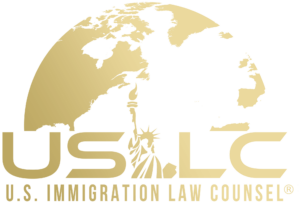You may not know whether you should apply for an EB-2 visa or an EB-3 visa if you wish to come to the United States. These visas are quite similar as they allow you to come to the U.S. through employment-based immigration, but there are some key differences you should be aware of. Having a thorough understanding of who these visas apply to will help you choose the right option so that you have the best chance of approval. Here is everything you need to know about applying for EB-2 vs EB-3 visas and which one is the best fit for your situation.
Overview of the EB-2 Visa: Eligibility and Benefits
One of the first things you need to understand when looking at employment-based visas is the eligibility requirements. For you to obtain an EB-2 visa, you need to meet three specific qualifications:
- Hold an advanced degree or a bachelor’s degree with five years of progressive work experience.
- Qualify for a national interest waiver, which proves that your work would substantially benefit the United States.
- Be able to demonstrate exceptional ability in your field with proof, such as awards, a high salary, etc.
Because of these requirements, EB-2 visas are meant for professionals who have advanced degrees or who can demonstrate exceptional ability. Because these requirements can be quite challenging to meet, fewer people are usually able to obtain this specific type of visa.
One of the main benefits of the EB-2 visa is that you have the option of bypassing the requirement of having a job offer and labor certification with a national interest waiver.
Overview of the EB-3 Visa: Eligibility and Benefits
As for applying for an EB-3 visa, the key differences between this and an EB-2 visa comes down to the requirements. While an EB-2 visa is designed for professionals with advanced degrees or exceptional ability, an EB-3 visa is for skilled workers, unskilled workers, or professionals.
To qualify for an EB-3 visa, you need to fit into one of these categories:
- Skilled workers: Have at least two years of work experience or training that is not of a seasonal or temporary nature.
- Other workers: Have worked in a job that required less than two years of training or experience.
- Professional professionals: Have a U.S. bachelor’s degree or a foreign equivalent.
The main benefit of obtaining an EB-3 visa is that it is more accessible to more people since it doesn’t require as extensive an education or work experience.
Key Differences: Education, Experience, and Job Requirements
There are several reasons why EB-2 and EB-3 visas are often used interchangeably, as they do have some similar benefits. For instance, they both allow you to live and work permanently in the U.S. as well as travel in and out of the U.S. Both visas also give you the ability to sponsor family members for green cards and begin your own pathway to U.S. citizenship.
That being said, there are some specific differences that set these visas apart. The main difference lies in the requirements as these outline who the visas are designed for.
To qualify for an EB-2 visa, you need to be able to provide proof that you have exceptional ability in your fields, hold an advanced degree, or qualify for a national interest waiver. Whereas to qualify for an EB-3 visa, you simply need to prove that you fall into the category of a professional, skilled worker, or unskilled worker.
Because of this, you need to choose the type of visa to apply for based on your education and work background. Taking the additional step and hiring an employment immigration attorney can help you with this decision. An attorney will have experience with employment-based immigration and can help you choose the right visa as well as apply for it.
Which Visa Has Faster Processing Times?
When determining which visa to apply for, speed may be something you are prioritizing. No matter the pathway you choose, the immigration process can be quite lengthy, especially if you run into issues.
In general, EB-2 visas tend to have a faster processing time as they are considered to be of higher priority than EB-3 visas. However, this is not a guarantee as it will depend on visa availability per country. Your application may also run into delays if you receive a request for additional evidence or if there are other issues with your application.
PERM Labor Certification: Is It Required for Both?
PERM labor certification is usually required with employment-based immigration, no matter the type of visa. The purpose of this certification is to prove that there are no qualified U.S. workers available to fill the job that you are coming to the U.S. to do. Although a critical part of your application, the PERM process will be handled by your U.S. employer who is sponsoring you.
With an EB-2 visa, you have the option of self-petitioning with a national interest waiver, which would allow you to obtain a visa without a job offer or PERM certification.
Consult an Employment Immigration Attorney
Do you want to get a green card through employment when you immigrate to the United States? Contact us today at U.S. Immigration Law Counsel at 800-666-4996 to speak with an employment immigration attorney about your situation. We will deal with the government, so you don’t have to!
FAQ:
Can I switch from EB-3 to EB-2 after applying?
It is possible to change your EB-3 visa status to an EB-2 visa; however, this is usually only possible if you experience a radical change in employment. If this is the case, it is strongly recommended that you hire an immigration attorney to help you apply to have your visa changed.
Do both EB-2 and EB-3 require job offers?
Both EB-2 and EB-3 visas require a job offer and an employer sponsor unless you also qualify for a national interest waiver when you apply for an EB-2 visa.
Which visa has a better chance of approval?
Generally, EB-3 visas have a better chance of approval as they apply to more people and don’t require as much evidence to prove your eligibility.




